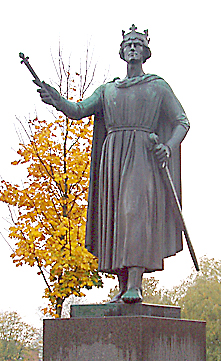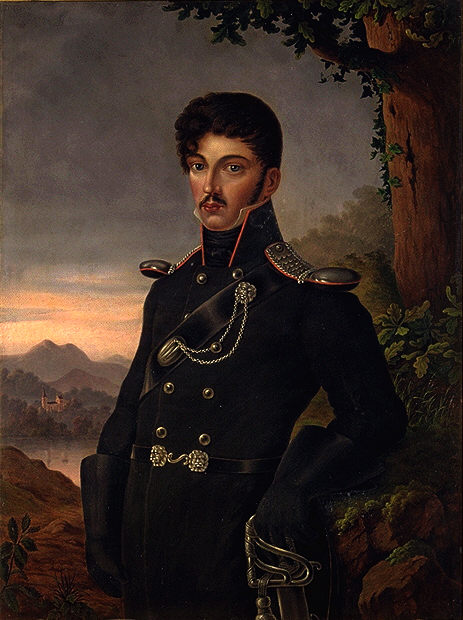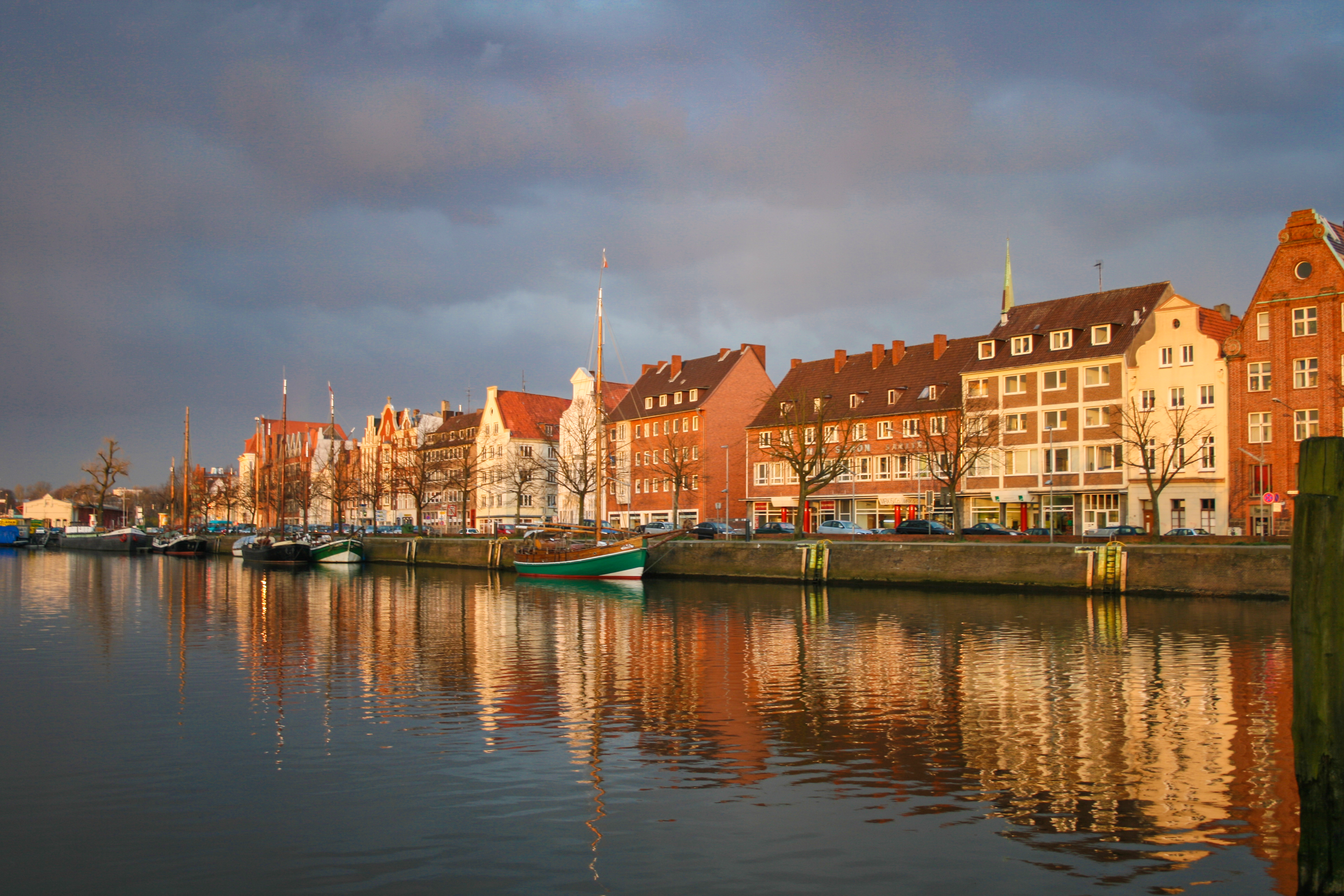|
Henry Of Badewide
Henry of Badewide (or Badwide) (german: Heinrich von Badewide) (died ca. 1164) was a Saxon Count of Botwide (after 1149) and Count of Ratzeburg (after 1156). Henry came from a knightly family from Lüneburg. He took his name from Bode near Ebstorf. He married a relative of King Valdemar I of Denmark and had two brothers, Helmold and Volrad; the latter was not, as often supposed, the first Count of Dannenberg. After replacing Henry the Proud as Duke of Saxony in 1138, Albert the Bear made Henry a ''Graf'' (count) of Holstein, but Henry was soon replaced by Adolf II. Gertrude of Süpplingenburg granted Henry a claim to Wagria to the east of Holstein. In response to a raid by the Obotrite prince Pribislav, Henry led a campaign into Wagria against the Polabian Slavs. The lands around Plön, Lütjenburg, and Oldenburg were laid waste, as was the region between the Schwale, the Baltic Sea, and the Trave. The campaign failed to capture any of the strong castles, however. A campaign i ... [...More Info...] [...Related Items...] OR: [Wikipedia] [Google] [Baidu] |
Valdemar I Of Denmark
Valdemar I (14 January 1131 – 12 May 1182), also known as Valdemar the Great ( da, Valdemar den Store), was King of Denmark from 1154 until his death in 1182. The reign of King Valdemar I saw the rise of Denmark, which reached its medieval zenith under his son King Valdemar II. Childhood Valdemar was the son of Canute Lavard, Duke of Schleswig, the chivalrous and popular eldest son of King Eric I of Denmark. Valdemar's father was murdered by King Magnus I of Sweden days before the birth of Valdemar; his mother, Ingeborg of Kiev, daughter of Grand Prince Mstislav I of Kiev and Christina Ingesdotter of Sweden, named him after her grandfather, Grand Prince Vladimir Monomakh of Kiev. Valdemar was raised at Ringsted in the court of Danish nobleman Asser Rig of Fjenneslev (c. 1080–1151). Asser was a member of the Hvide noble family and had been raised together with Valdemar's father Canute Lavard. Valdemar was raised together with Asser's sons, including Absalon (c. 1128–120 ... [...More Info...] [...Related Items...] OR: [Wikipedia] [Google] [Baidu] |
Pribislav (Wagrian Prince)
Pribislav ( 1131–d. after 1156) was an Obotrite prince who ruled Wagria as "Lesser king" (''regulus'') and resided in Liubice, governing one half of the Obotrite lands, the other half being governed by Niklot. Life Pribislav was the son of Budivoj, and nephew of Henry. After the murder of Canute Lavard in 1131, the Obotrite lands were partitioned between Pribislav and Niklot, with the former receiving Wagria and Polabia and the latter Mecklenburg until the Peene River; Pribislav received the title ''regulus'', or lesser king and resided in Liubice. A follower of Slavic paganism, Pribislav was described by Emperor Lothair III, whom he was dependent upon, as an enemy of Christianity and an idolater. After the death of Lothair in 1137, Lothair's son-in-law Henry the Proud and Margrave Albert the Bear fought over the Duchy of Saxony. Pribislav took advantage of the struggle to rebel against the authority of the Holy Roman Empire by destroying the new castle of Segeberg and invading ... [...More Info...] [...Related Items...] OR: [Wikipedia] [Google] [Baidu] |
Boizenburg
Boizenburg () is a municipality in the Ludwigslust-Parchim district in Mecklenburg-Western Pomerania, Germany. It is situated on the right bank of the Elbe, 53 km west of Ludwigslust, 25 km northeast of Lüneburg and 50 km east of Hamburg. It is part of the Hamburg Metropolitan Region. Boizenburg's historical old town stretches along the Elbe, has a harbour and offers heritage baroque timberframe and brick buildings. As per the dictates of the Yalta Conference, Boizenburg was placed just a few kilometers behind the perimeter of the Iron Curtain, otherwise known as the 'Inner German Border'. History The German name ''Boyceneburg'' was first documented in 1158. The written form changed to ''Boiceneburg'' (1171) and then ''Boizeneburg'' (1195). The old Low German name for the town and river (Boize) likely stems from the Slavic ''boj'' for war (''boj''-burg = war-castle). Boizenburg suffered during the Thirty Years' War and its old castle was burnt down by Swedish ... [...More Info...] [...Related Items...] OR: [Wikipedia] [Google] [Baidu] |
Wittenburg
Wittenburg () is a town in the district Ludwigslust-Parchim in Mecklenburg-Vorpommern, Germany. Population 6,092, area 80.0 km². Wittenburg has been the seat of the Amt of Wittenburg since January 2004. It is in the west of Mecklenburg-Vorpommern and lies on the little river Motel. The settlements of Helm, Klein Wolde, Wölzow, Lehsen, Körchow and Ziggelmark are part of Wittenburg. At the beginning of the 12th century, Wittenburg belonged to the territory of the Polaben Obotrites. Wittenburg was first mentioned in 1154 and gained town privileges in 1230. Number of inhabitants Notable people * Harald Ringstorff (born 1939), politician (SPD) Gallery Image:Wittenburg church.jpg, St. Bartholomew's church File:Wittenburg tower.jpg, Tower of town wall File:Wittenburg Amtsberg.jpg, File:Wittenburg Stadtmauer Wallstr.jpg, Town wall File:Wittenburg Toitenwinkel 4.jpg, Timber framing File:Wittenburg Gluecksfaenger.jpg, Sculpture on market square File:Wittenburg Motel bri ... [...More Info...] [...Related Items...] OR: [Wikipedia] [Google] [Baidu] |
Gadebusch
Gadebusch () is a town in Mecklenburg-Western Pomerania in the district of Nordwestmecklenburg. Halfway between Lübeck, Schwerin and Wismar, it is part of the Hamburg Metropolitan Region. The town is known for two notable monuments: the ''Stadtkirche'' (City Church), built in 1220, considered the oldest brick church in Mecklenburg, and the ''Schloss'' (Castle), built in 1580–1583 in Northern Renaissance style. Near the town is the site of the Battle of Gadebusch in 1712. Gadebusch municipality Besides the old town of Gadebusch, the following settlements are incorporated with the Gadebusch municipality: * Amtsbauhof * An der Flöte * Buchholz * Dorf Ganzow * Güstow * Güstow Werder * Hof Ganzow * Jarmstorf * Klein Hundorf * Möllin * Neu Bauhof * Neu Güstow * Reinhardtsdorf * Stresdorf * Wakenstädt EducationGymnasium Gadebusch (High School)
|
Polabia
:''"Polabian Slavs" is often used as a general term for the West Slavs of Germany. This article is about the specific tribe called "Polabians".'' The Polabians (german: Polaben; la, Polabi) were a constituent Lechitic tribe of the Obotrites who lived between the Trave and the Elbe. The main settlement of the Polabians was Racisburg (modern Ratzeburg), named after their Prince Ratibor. The Polabians were similar to the Drevani, also known as the Draväno-polaben or Drevanen, in Lüchow-Dannenberg. In 1139, Henry the Lion granted "Polabia" to Count Henry of Badewide. The tribe was subsequently Germanized and assimilated over the following centuries. The last remnants of the Polabians, including the Polabian language, died out in the 18th century. Cultural remnants of the Polabians of Lower Saxony include numerous villages in the region based on Slavic settlement forms. See also *List of Medieval Slavic tribes This is a list of Slavic peoples and Slavic tribes reported in Late ... [...More Info...] [...Related Items...] OR: [Wikipedia] [Google] [Baidu] |
Segeberg
Segeberg (; frr, Segebärj) is a district in Schleswig-Holstein, Germany. It is bounded by (from the southwest and clockwise) the districts of Pinneberg, Steinburg and Rendsburg-Eckernförde, the city of Neumünster, the districts of Plön, Ostholstein and Stormarn, and the city state of Hamburg. History The history of the district is connected with the history of Holstein. In 1134 the castle of Segeberg was erected as a regional centre from where the reeve of Segeberg ruled. When Schleswig-Holstein became a Prussian province in 1865, the Prussian administration established the district of Segeberg. Since then the district has considerably grown twice: In 1932 parts of the dissolved district of Bordesholm joined the district; and in 1970 the city of Norderstedt became part of the district. Geography The district of Segeberg consists of the agricultural plains between the cities of Neumünster and Hamburg (male), (female) en, Hamburger(s), Hamburgian(s) , timezone1 ... [...More Info...] [...Related Items...] OR: [Wikipedia] [Google] [Baidu] |
Henry The Lion
Henry the Lion (german: Heinrich der Löwe; 1129/1131 – 6 August 1195) was a member of the Welf dynasty who ruled as the duke of Saxony and Bavaria from 1142 and 1156, respectively, until 1180. Henry was one of the most powerful German princes of his time, until the rival Hohenstaufen dynasty succeeded in isolating him and eventually deprived him of his duchies of Bavaria and Saxony during the reign of Emperor Frederick Barbarossa and of Frederick's son and successor Henry VI. At the height of his reign, Henry ruled over a vast territory stretching from the coast of the North and Baltic Seas to the Alps, and from Westphalia to Pomerania. Henry achieved this great power in part by his political and military acumen and in part through the legacies of his four grandparents. Family background Born in Ravensburg, in 1129 or 1131, he was the son of Henry the Proud, duke of Bavaria and Saxony, who was the heir of the Billungs, former dukes of Saxony. Henry's mother was ... [...More Info...] [...Related Items...] OR: [Wikipedia] [Google] [Baidu] |
Trave
The Trave () is a river in Schleswig-Holstein, Germany. It is approximately long, running from its source near the village of Gießelrade in Ostholstein to Travemünde, where it flows into the Baltic Sea. It passes through Bad Segeberg, Bad Oldesloe, and Lübeck, where it is linked to the Elbe–Lübeck Canal. It is navigable for sea-going vessels from the Baltic to the Lübeck ports. The Herren Tunnel crosses the Trave, as do numerous bridges, and a ferry connects Travemünde with Priwall Peninsula, Priwall. Tributaries of the Trave include the Wakenitz and the Stepenitz (Trave), Stepenitz. Course Source and upper Trave The Trave rises in Gießelrade (a village in Ostholstein), whence it flows first southwesterly through the Wardersee to Bad Segeberg and then further south to Bad Oldesloe. There it bends eastward to just south of Reinfeld, Schleswig-Holstein, Reinfeld, flowing past Hamberge and (a district of Lübeck) to reach Lübeck. In Lübeck The Elbe–Lübeck Canal joi ... [...More Info...] [...Related Items...] OR: [Wikipedia] [Google] [Baidu] |
Baltic Sea
The Baltic Sea is an arm of the Atlantic Ocean that is enclosed by Denmark, Estonia, Finland, Germany, Latvia, Lithuania, Poland, Russia, Sweden and the North and Central European Plain. The sea stretches from 53°N to 66°N latitude and from 10°E to 30°E longitude. A marginal sea of the Atlantic, with limited water exchange between the two water bodies, the Baltic Sea drains through the Danish Straits into the Kattegat by way of the Øresund, Great Belt and Little Belt. It includes the Gulf of Bothnia, the Bay of Bothnia, the Gulf of Finland, the Gulf of Riga and the Bay of Gdańsk. The " Baltic Proper" is bordered on its northern edge, at latitude 60°N, by Åland and the Gulf of Bothnia, on its northeastern edge by the Gulf of Finland, on its eastern edge by the Gulf of Riga, and in the west by the Swedish part of the southern Scandinavian Peninsula. The Baltic Sea is connected by artificial waterways to the White Sea via the White Sea–Baltic Canal and to the German ... [...More Info...] [...Related Items...] OR: [Wikipedia] [Google] [Baidu] |
Schwale
The Schwale is an approximately 16 kilometer long river in Schleswig-Holstein, Germany. The origin is in the district Segeberg close to Gönnebek, the confluence with the Stör is in the independent town Neumünster. In the centre of Neumünster the river is dammed to an artificial lake from the medieval times to operate a water mill. See also *List of rivers of Schleswig-Holstein A list of rivers of Schleswig-Holstein, Germany: A * Aalbek, flowing through the Hemmelsdorfer See and into the Baltic Sea * Aalbek, tributary of the Stör *Alster *Alte Schwentine * Arlau B * Barnitz * Basshornlaufgraben * Bekau * Beste * ... Rivers of Schleswig-Holstein Rivers of Germany {{SchleswigHolstein-river-stub ... [...More Info...] [...Related Items...] OR: [Wikipedia] [Google] [Baidu] |
Oldenburg (Holstein)
Oldenburg in Holstein () is a town at the southwestern shore of the Baltic Sea. The nearest city is Lübeck. The town belongs to the (historical) region of Holstein, today in the state Schleswig-Holstein of Germany. Oldenburg was the chief town of the Wagrians, one of the Slavic peoples that migrated as far west as the river Elbe in or after the 6th century (see Völkerwanderung), also known as Wends and Obotrites. They arrived about A.D. 700 and the Pomeranian/ Kashubian (Slavic) name was ' or ', meaning "Old Settlement", "Old Castle", "Old City/Town"; the German name ' is of Low German origin and carries the same meaning. The Obotrites were allies of Charlemagne. Emperor Otto I established the bishopric of Oldenburg under Adaldag, archbishop of Hamburg. To the Northern Germanic Vikings, the city was known as ', i.e. "the burned houses", indicating the bellicose times. For centuries, Starigard/Oldenburg remained the Slavic competitor of Hedeby on the Baltic trade, until the ... [...More Info...] [...Related Items...] OR: [Wikipedia] [Google] [Baidu] |





